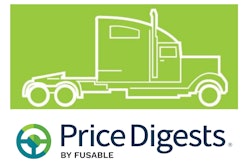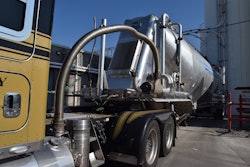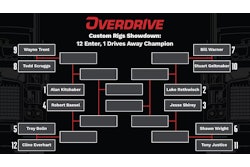The market for used trucks is steadily improving for owner-operators post- COVID. Shortages of parts, particularly computer chips, for new truck builds, combined with high freight demand, caused used-truck prices to really skyrocket during that perhaps once-in-a-lifetime event.
Now that conditions have stabilized, the market where most owner-operators source their equipment, especially early in their careers, is back as a reliable place. Yet how you evalute the truck or trucks you're considering will be key to your business's uptime, and the equipment's value and reliability long-term.
EVALUATE COMPONENTS AND FUEL EFFICIENCY. The truck's make and model alone tells you very little. Because trucks can be spec’d so many ways, you need to know much more about components in a particular vehicle -- the engine, transmission, rear-end ratio, horsepower and torque settings, component weights and axle weight limits, etc. These specs can impact your profitability, so make sure you get the right truck for the job.
With your application in mind (type of freight, regions of haul, expected weight, etc.), spec the truck from the bumper to the mudflaps. The first two priorities are always fuel mileage and low maintenance costs. All of the above mentioned pieces of the truck contribute, likewise the body style, tire sizes and styles, accessories, auxiliary power units or other idle reduction technology like bunk heaters and battery-A/C systems, the miles on the odometer, sleeper size, and more. Specs properly matched to your application will contribute to better fuel economy.

Most used trucks you'll find probaby weren't spec’d for optimal fuel mileage, so dig deep to find what you need.
[Related: In a tough trucking business environment, owner-operator must improve efficiency to compete]
START YOUR SEARCH. Many online resources are available to search for used trucks. A simple Google search will get you started. List all truck models that might meet your criteria; in the beginning, you might want to try to match your criteria exactly, but if you are having trouble, lighten up a bit on the requirements.
Give yourself plenty of time for research -- 30 to 60 days is not out of the question. Be persistent.
Among sources is EquipmentExperts.com, operated by Overdrive’s publisher. It’s a used equipment marketplace representing many dealers. It includes verified owner reviews, articles from Overdrive’s editors, equipment comparison tools and specs.
NARROW YOUR LIST. Once you've found three to five trucks that meet your key requirements, rank them by your preferences. Run a VIN check online through services such as Overdrive’s own RigDig Truck History Report service to get as much history as possible; you will find ownership history, insurance claims, accidents, mileage history and more. (A single report costs just $34.95.) When you find a clear reason to not buy a certain truck, put it aside and move on.
RESEARCH IN DEPTH. Call the dealer and get as much information as possible: maintenance history, full ECM reports, pictures, even video. If a dealer says he doesn’t have this information or otherwise puts you off, move on. Other dealers will work with you, and their cooperation is critical to making the right decision. Take time to research the operation in which the truck has been used. If the truck came from a large fleet, chances are its maintenance records are available.
Don't neglect attention to preventive maintenance performed relative to the truck's emissions-control system, which will be a feature in most 2007 and later model year trucks. In 2010 and later trucks, for instance, a thorough annual cleaning of the diesel-exhaust-fluid doser among other components is part of a notable truck service shop's annual recommended emissions-system service to ward off failures in selective catalytic reduction systems.
A prospective used truck buyer should see value in maintenance records that deliver confidence such cleaning, among other effective routine PM, had been peformed throughout the history of a truck outfitted with an SCR system.
[Related: Used-truck pricing, long-term value: Emissions system PM could play increasing role]
SCHEDULE INSPECTIONS. Three separate inspections are ideal, performed by shops other than the selling dealer:
- Engine inspection by an original equipment manufacturer shop (i.e., a Detroit Diesel garage for a Detroit engine), including tests for dyno, engine blow-by, oil analysis and charge air cooler, and an evaluation as to whether the engine’s condition is reasonable for its mileage.
- Front-end inspection. This provides a good indication of how well the truck has been maintained.
- Finally, a bumper-to-mudflap inspection by a well-qualified mechanic. Ask the mechanic for his opinion on the truck overall, including the condition of all major systems.
Read next: Ways to assess truck value for purchase, trade or sale, insurance










